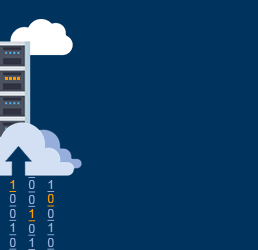New on LowEndTalk? Please Register and read our Community Rules.
All new Registrations are manually reviewed and approved, so a short delay after registration may occur before your account becomes active.
All new Registrations are manually reviewed and approved, so a short delay after registration may occur before your account becomes active.
NoIP Moving to a Subscription Model, how to make a DIY solution with a VPS
Have a domestic server (a Raspberry Pi) behind domestic router with dynamic IP. Till now, I could use NoIP free service to get nameserver, and use DNS to find it.
How can I use a VPS to keep track of a dynamic IP and Raspberry PI behind it.
In other words, some s/w on a Raspberry PI that updates a VPS with the IP address of the Raspberry PI ?
















Comments
Cloudflare with ddclient port?
https://github.com/ddclient/ddclient
https://www.cloudflare.com/technical-resources/
Cloudflare or Google Domains can do the work.
.....Hurricane Electric has free dynamic dns service.
https://dns.he.net/
If you want your own dns server on your VPS then a simple shell script on the Raspberry PI could update it easy enough.
That's not a problem, in future we, residential users, will have no public ipv4 to begin with. Hence, no ip will come to us, whether we like it or not. I'm not sure how lowering the user count and increasing the price is going to do something for NoIP, but then again, only free service does nothing good as well. They could leave dynamic dns free and offer dns hosting for own zone paid, but, reasons.
cloudns offers dyndns for free too (and gives some sample scripts as well)
profits.
let no-ip die. there are better alternatives. They already had an expiration policy on their subdomains.
Not sure why you need your own vps. If you want the Rpi to update DDNS, you can use https://www.duckdns.org. It is a free reputable service.
how much electricity will rpi server cost to run 24/7 for 30 days?
I found DynU to be faster than other free ones, but going forward, will use google domains or Cloudflare if I can do registration and DNS only when they open things up.
here you have the power each model draws, you can do the math with that:
https://www.pidramble.com/wiki/benchmarks/power-consumption
wow thats cheap. If i do the math correctly, tariff rate in Malaysia is MYR0.21/kWh for the first 200kWh.
running rpi server at high cpu load with external hdd/sdd is 7 watts/hour. so running it for a month is 5kWh. 5 x 12 = 60kWh/year .
60kWh/year only cost MYR12.6 or USD $3 . Only need to pay USD3/year for electricity!
I was calculating it back then, and i think, don't quote me on this, where i live i came to a number of like 1EUR/month for power, now add like 1EUR/month for it's little share of crappy home internet and 1EUR/month for the hardware itself over the next 3 years... So, if you don't want to have the hardware and require better performance in all ways, i figured that a Scaleway C1 fits perfectly.
I think in the long run you save by using a home pi. You reuse an old pi and retain the hardware afterwards, pies age well, plus the internet connection is already there, so you're not paying extra, but, is it worth it?
In the end, it's like 1EUR/month at home vs 3EUR/month commercial...
To put things in perspective, that's like you save one decent meal per month, by hosting a pi you already own, on an internet you already have, at home.
Absolutely yes for infrastructure, like dns server for example and things that you don't want potential nosy people poking their nose in.
It depends on electricity cost, i'll redo this one with precise numbers for myself...
But then again, no mater the cost, you could acquire the power for a pi by unplugging all usb chargers and what not idling devices from the grid. That or taking one less shower per month.
So yes, it's quite doable and lucrative.
thanks, https://www.cloudns.net looks the business for now.
Also will read up on the DIY solution using my VPS as DNS
check dhcp.io source code
If you have a domain with Namecheap they offer API to update DNS records.
I did that once for a customer who had dynamic IP. An https request with proper formatting and it's updated.
There's also http://www.dnsomatic.com/ from OpenDNS.
Hi john654,
I've read your thread carefully and got point. You're having trouble with your RPI server which have dynamic IP.
If you can afford VPS, purchase cheapest one. Search for minimum latency. @Cam or @mikho have some. Doesn't matter wheather it's NAT (cheap) or dedi (reliable). Then build OpenVPN server, connect your. Don't forget to keep using default gateway from your provider.
Hi blackhiden, @blackhiden
thanks, I need domestic server for access to TV and other services.
I already have commercial VPS's. I need both solutions.
I'm sorry. Then I missunderstand
http://freedns.afraid.org
i'd really like to post a helpful comment here, but
I'm running no-ip client which update the subdomain on the raspi. But I also install tinc on the raspi and vps.
So, when I connect to the vps using vpn or shadowsock, I just need to open the interface of raspi tinc, such 10.0.0.2, and all the service will be available.
I'm using duckdns for over a year, it's never let me down.